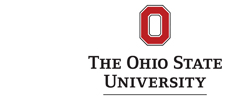Starting Aug. 16, 2025 at 9:00 AM (Eastern Standard Time), this server will be shut down temporarily to migrate services to our new server at https://colmar.cloud. Please update your bookmarks accordingly.
All saved user jobs, files, and settings will be migrated automatically. The new server will be fully operational by Aug. 18, 2025.
This current server will remain accessible until Aug. 31, 2025. However, any jobs submitted after Aug. 16, 2025 at 9:00 AM (EST) will NOT be migrated to the new server.


COLMARm 13C-1H HSQC, HSQC-TOCSY and TOCSY Query and Verification
- (Notice: spectra files can be nmrPipe (.ft2), sparky (.ucsf), Topspin ASCII format (.txt)) or Mnova .csv format. The server uses the file extension to distinguish file formats!
Peak fitting is recommended only if compound quantification is planed. It may take up to several hours for a complex spectrum
Choose solvent: water or chloroform.
Choose compounds as references:
The server automatically the reference correction by matching the peaks patterns of selected known compounds against experimental peaks. In this process, match at least
out of known peaks.
1H: 13C:
Current contour level cutoff: 1
Current contour level cutoff: 1
Control: Brush an area to Zoom in, or remove peaks within this area. , ,
Peak list:
Visualization options:
- Zoom scale:
- plot size:
HSQC Negative lowest contour level: = 0
Tocsy Negative lowest contour level: = 0
HSQC-TOCSY Negative lowest contour level: = 0
Download frq domain spectrum
Download picked peaks
Download fitted peaks
Download reconstructed spectral file
Download different spectral file
Using Space or Comma as delimiter.
![]() Reference
Reference
 Questions or comments? Please feel free to contact us.
Questions or comments? Please feel free to contact us.
Acknowledgement
This web server and the research that led to it is supported by the National Institutes of Health (Grant R01 GM 066041).Most chemical shifts in COLMAR database were retrieved from the existing databases listed below, which all allow public access.
*This information is only used for the compilation of our webserver usage data.
This server is last updated at February 03 2025 10:26:51.